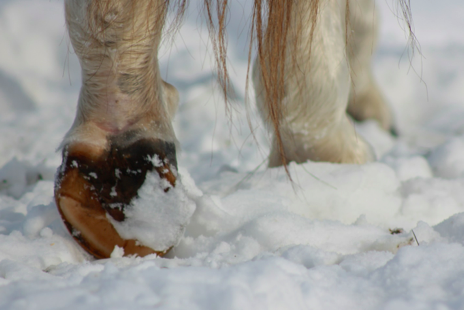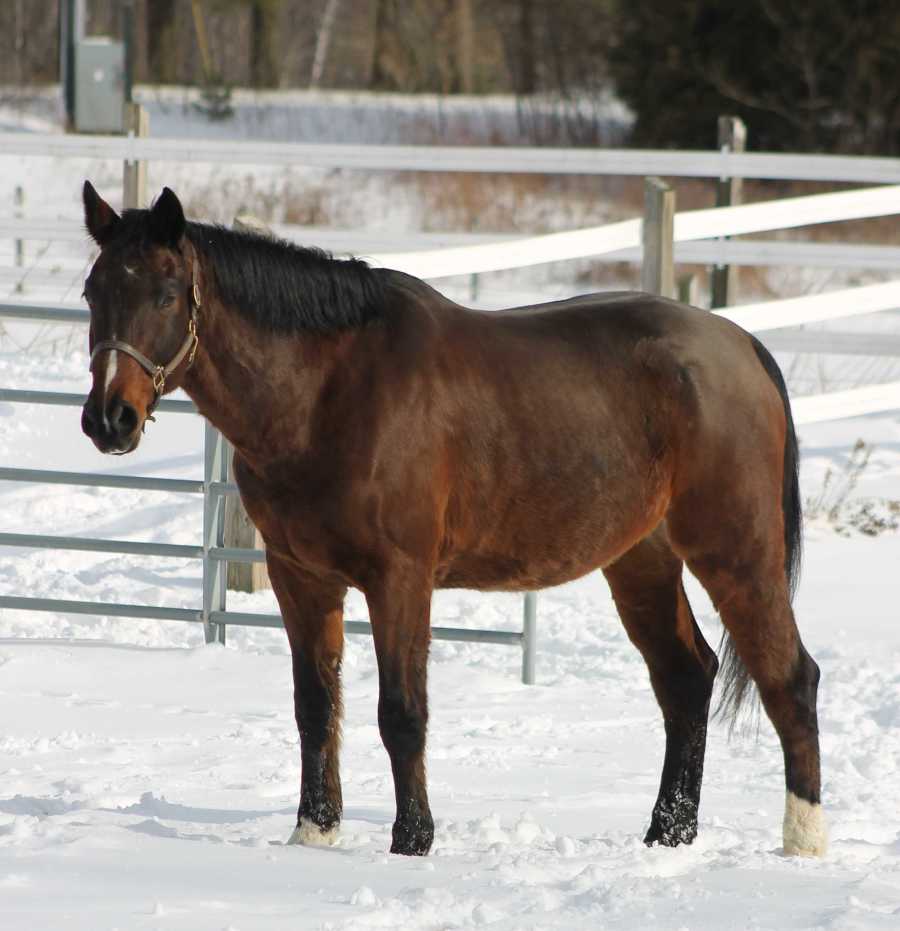By Paige Cerulli, Licensed Equine Massage Therapist
All photos courtesy of Paige Cerulli
There’s currently ice on the ground in many areas of the country. Walking and standing on ice is not only hazardous for horses, but it can make your horse’s body sore. Horses are forced to take shorter, awkward steps on ice, and slips and falls do occur.
Luckily, massage can help to minimize the effects that icy ground has on your horse’s body. Follow these tips to help your horse cope with the icy winter footing.
Check the Ground for Ice
While massage can be useful for relieving pain and helping your horse to recover from an injury, injury prevention is just as important, especially in the winter. Before you go for a ride outdoors or turn your horse out into his paddock, carefully inspect the ground for ice. Don’t forget to inspect under the snow, especially if the snow has been thawing and freezing.
If you have been planning to ride but find that there is ice in the ring, it is safest to forego your ride entirely. If you need to navigate icy areas to get your horse out to the paddock, then thoroughly sand icy areas before walking on them. Some owners like to toss used bedding over the ice, but doing this can actually have an insulating effect, keeping the ice from melting.
Minimize Snow Buildup in Hooves

As snow builds up in your horse’s hooves, it can poorly affect his balance and his traction when he encounters ice. To reduce snow buildup, consider letting your horse go barefoot during the winter or put on shoes with snow pads designed to pop the snow out of the shoe as it accumulates. You can also rub Vaseline or spray cooking spray into the bottoms of your horse’s hooves before turning him out – these slippery substances help to keep snow from building up.
Use a Cooler to Keep Muscles Warm
When you start massaging your horse during the winter, it’s a good idea to put a cooler on him to help keep his muscles warm during the massage. You can quarter the cooler to expose just the part of the horse’s body that you’re working on.
Focus Your Massage on the Lower Limbs
The horse’s lower legs are often overlooked during massage. In fact, the lower legs can truly benefit from massage, and may be quite sore after navigating snow and ice during the day. Focus your massage on the lower legs and spend lots of time working the joints, tendons, and ligaments of the legs. Cross-fiber massage can bring relief to sore joints, and using the Posture Prep Cross Fiber Groomer makes performing cross-fiber massage easy. As you massage, keep an eye out for areas of swelling – they could indicate injuries to your horse’s tendons or ligaments, so a vet visit may be necessary.
Check for Areas of Spasm
Walking on ice can affect the large muscles of your horse’s body, too. Strains and spasms are common, so as you work on your horse’s body, feel for areas where the muscles are in spasm. As you find these areas, focus on relieving the tight muscles – you will be able to feel when the spam releases.
Be sure to also work the horse’s poll, and even his jaw and mouth. Horses tend to hold tension in these areas.
Treat Performance Horses With Daily Massages
If you own a performance horse who is in training over the winter, then it’s a good idea to treat him with daily massage sessions. While you don’t have to do an all-body intensive massage, massaging your horse on a daily basis can allow you to identify sore or injured areas so that you can keep him in optimal health.
Massage Pre-Workout

Make a point of massaging your horse before each ride, especially in the winter. If you will be riding outside, then a pre-ride massage can help to ensure that your horse’s muscles, tendons, and ligaments are relaxed and ready to recover in case your horse slips. Massaging your horse before a ride, or even before turning him out, can help to keep him safer, reducing his chance of injury.
Massage is a wonderful tool to help minimize the effects of icy ground on your horse. And remember, Spring is right around the corner and the ice won’t be here much longer.

